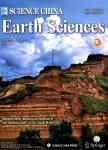Regional climate response to global warming in the source region of the Yellow River and its impact on runoff
作者机构:Center for Monsoon System ResearchInstitute of Atmospheric PhysicsChinese Academy of SciencesBeijing 100029China University of Chinese Academy of SciencesBeijing 100049China State Key Laboratory of Atmospheric Boundary Layer Physics and Atmospheric ChemistryInstitute of Atmospheric PhysicsChinese Academy of SciencesBeijing 100029China
出 版 物:《Science China Earth Sciences》 (中国科学(地球科学英文版))
年 卷 期:2024年第67卷第3期
页 面:843-855页
核心收录:
学科分类:07[理学] 08[工学] 070601[理学-气象学] 0708[理学-地球物理学] 081501[工学-水文学及水资源] 0815[工学-水利工程] 0706[理学-大气科学]
基 金:supported by the Second Tibetan Plateau Scientific Expedition and Research Program(STEP)(Grant No.2019QZKK0103) the National Natural Science Foundation of China(Grant No.42150205)
主 题:The source region of the Yellow River Climate response Runoff variation Evaporation Precipitation
摘 要:The source region of the Yellow River has experienced obvious climate and discharge changes in recent decades due to global warming, which largely affects the water resources and ecological and environmental security in the Yellow River basin. This study analyzed the changes in runoff and several climate factors in the source region of the Yellow River based on the observed discharges at the Tangnag hydrological station, routine meteorological data from China Meteorological Administration(CMA) stations within and near this source region, and several evaporation datasets. The results indicate that the runoff in the source region was relatively abundant from 1960 to 1989 and then declined sharply afterward. It recovered slightly after 2005 but was still below normal—10% less than that during 1960–1989. Similarly, the precipitation amounts in the source region were relatively low in the 1990s, but they increased significantly after 2003, with an average increase of 31.4 mm or 6% more when compared to that in 1960–1989. In addition, the temperatures in the source region continued to rise from 1960 to 2017, and the evaporation levels also showed an upward trend after 1990. The influences of the spatial and temporal variations in climatic factors on runoff in the source region were then further analyzed. The results indicate that the decreases in precipitation and the number of days of heavy rainfall in the source region from 1990 to 2002 were important reasons for the lower runoff during this period. After 2003, the precipitation in the southeastern part of the source region, which is a key area for runoff generation,increased only to a limited extent, but the evaporation in the entire source region generally increased with increasing temperature,which might have led to the low capacity for actual runoff production in each subbasin and persistent low runoff in the source region. Therefore, such a climate response to global warming in the source region might be unfavorabl



